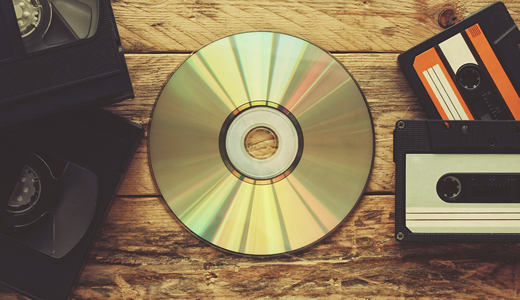I bought a CD last night. (Rock guitar instrumentalist Joe Satriani’s latest release, if you must know. But I digress already.)
I bought it because even though I listen to tons of music digitally (streaming, and in my 15-year-old iTunes library), I just like having a real, physical copy of my music. It’s tactile. Reliable. I don’t have to worry about syncing up my phone’s Bluetooth, wondering if I’m over my data limit, figuring out which streaming service to use, etc.
The irony for me is that, for all its supposed simplicity, digital music delivery is, well, complicated. A CD? I just put it in my car’s stereo, and it plays. Easy, peasy, right?
Well, yeah, whatever, buddy. The metaphorical meteor of digital music hit years ago, and only a few of us old, old-school dinosaurs still prefer such archaic delivery methods.
There are apparently so few of us, in fact, that Best Buy announced this week that it’ll soon cease selling CDs altogether. July 1 will be the last day you can buy one at the chain. Meanwhile, Target has demanded that music labels essentially treat their CDs as being on consignment: If they don’t sell, Target ships them back and makes the labels eat the cost, instead of the store itself.
CD sales, of course, have been slipping for most of this millennium. First it was illegal downloads eating into the numbers. (Napster, anyone?). Then legal streaming.
Now, a whole generation is arriving that may never actually own or pay for any music at all. It’s a foreign concept to them. Because once you give something away, it’s very difficult to convince people that they need to pay for it ever again.
Music formats, of course, have changed almost since records arrived. We went from 78s to 45s, to “long play” albums (that’s what the album synonym LP stands for, by the way), to 8-tracks, to cassettes, to CDS to our current digital platforms. At any point in music history, one format has almost always been on the way in, another heading toward the door. (AM radio is currently in similar death throes, with FM not far behind it in some places.)
Still, I can’t help but feel a bit sad about the CD’s continuing implosion. I like the nostalgia of actually owning my music, and its associated album covers and liner notes. It feels … real.
Streaming? It doesn’t feel real. It feels virtual. Transitory. Unimportant.
Apart from my nostalgia, though, what are the practical implications of this ongoing shift?
I think the biggest one is that the transition to the seamless streaming of digital music anywhere, anytime makes it more challenging for parents, especially, to know what their kids are listening to. Once upon a time, we at least had those album covers and lyrics to look at. You had some idea of what your tween or teen might be listening to because, well, the CD jewel case was right there.
Now? That stuff’s all virtual. (Well, except for the unlikely resurgence of vinyl among those who’ve rediscovered how much better real records actually sound. But that is another column for another day.)
What that means for parents is that if you want to know what your children are into, musically speaking, you’re going to have cultivate a relationship with them to find out. You’re going to have to enter into their world and ask them, What are you listening to? Who are you into these days? And given the vast panoply of music floating out there in the digital ether, there’s a pretty good chance you won’t have heard of most of the artists they might mention.
I’m nostalgic by nature, and I’ll quietly mourn the passing of this medium a bit. (And I might frequent independent record stores a bit more on those occasional days when I want an honest-to-goodness copy of the new Joe Satriani CD.) But as far as my kids are concerned, it’s a whole new world … and one that I’m going to have to engage with very intentionally as they get older.






Recent Comments